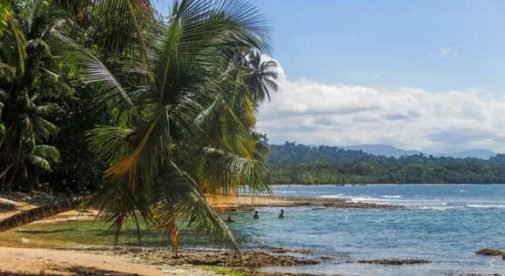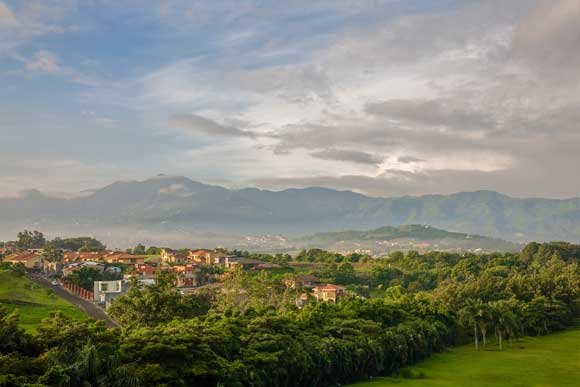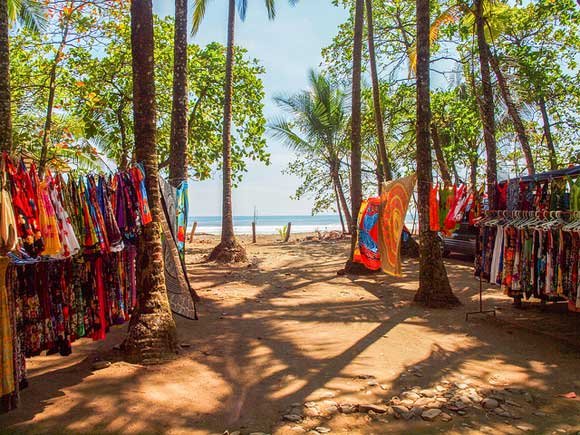Best Places to Live in Costa Rica: Two Top Expat Havens

“There’s something in the air that provides the deepest sense of peace. People laugh about the Pura Vida but it’s true, it’s really here. All you have to do is accept it.” That’s expat Chuck Mollenkopf talking about the elusive ingredient to the “pure life” he has found in Costa Rica.
“Pure life” is the literal translation. But that doesn’t do it justice… “I actually enjoy everything more and appreciate the small things, such as trying a new fruit or vegetable each week from the farmers’ market in town,” says Denice Key from Colorado. “It’s the Pura Vida everyone talks about.”
It’s a philosophy of favoring relaxation, friends, family, and fun above all else. It’s about cherishing life’s simple pleasures and not rushing to get things done. And it comes to infect everyone who calls this country home.
For decades Costa Rica has been among the world’s premier retirement destinations. It still is. Chuck and his wife Anna launched their Pura Vida lifestyle in 2012. They sought a mild climate, better healthcare, amazing views, and lots to do…and all at a lower cost of living.
You’ll find established and welcoming expat communities all across the country. It’s easy to make friends to explore the jungle with, or to share an ice-cold, two-buck Pilsen beer while watching the sun set from a beach. And, given the many English speakers here, you don’t need fluent Spanish to fit in (though knowing some helps). It all adds up to an easy, seamless integration into Costa Rican life.
Stick your toes in the sand and let the surf wash your worries away. Fill your days fishing, surfing, or scuba diving amid vividly colored tropical fish. Or settle in a mountain town where hummingbirds stop by your garden every day.
Stuff your shopping bags with a week’s worth of delicious fruit, vegetables, bread, meat, and cheese from the local farmers’ market for $40. And modern highways mean that access to big-city conveniences, U.S.-brand stores, and world-class hospitals is straightforward.
With so much choice, picking the right Costa Rica haven off your shortlist just depends on what you want… Here are the two top retirement spots in the country.
1. The Central Valley
By Greg Seymour

When they retired overseas, Jim and Irina Just wanted great weather and great views. They also wanted to be close to the airport, hospitals, and culture, and to have a vibrant expat community to mingle with. And they didn’t want to depend on a car to get around.
And this perfect location comes in right at the couple’s monthly retirement income of $2,000.
“This allows us to live really well,” says Irina. “We had a terrific life in the States; we just couldn’t afford it in retirement,” says Jim.
“There is so much to do close to our home here. Irina walks to yoga, and even though we own a car, we often use the local bus. The bus stop is a short walk from our house, and is an affordable way to run errands in town or to take in some culture in San José (an hour away), like a museum tour or a theater performance.”
Consistently cool weather is what Costa Rica’s Central Valley is best known for: You can expect temperatures in the 70s F year-round. It’s located in (you guessed it) the center of the country, surrounded by mountains. Elevations here range from 2,500 to 5,000 feet, giving you mountain views no matter where you settle. And as it’s close to the capital, San José, it’s also Costa Rica’s most convenient retirement haven.
This convenience means the Central Valley is not the cheapest place to live in Costa Rica, although many expats (my wife and I included) can still live well on under $2,000 a month. You’ll have everything you need—from modern healthcare to great shopping—within easy reach.
Jim and Irina moved here four years ago from the Pacific Northwest, and they find that their small retirement income goes a long way. Jim says, “We had the choice of living in penury in the U.S. or in luxury in Costa Rica.”
“We chose luxury,” Irina adds.
Their house sits at 4,500 feet on the slope of Poás Volcano, with expansive views of the coffee farms on surrounding mountains. The temperate climate ensures a small utility bill, as they need neither heating nor air conditioning.
Jim and Irina love the expat community in the nearby town of Grecia. They host frequent dinners with friends, as well as a monthly writers’ group.
“Our calendar is full. Retirement is not sitting around doing nothing,” says Irina.
You’re guaranteed to find a Central Valley town that fits your needs. If you want the amenities and fast pace of city life, try the large towns of Alajuela, Cartago, and Heredia. If you’d rather slow things down, but still have a friendly expat community and great shopping options, you may prefer the farming towns of San Ramón, Atenas, and Grecia.
2. The Southern Zone
By Jason Holland

From my perch, I can see the splendor of the Pacific laid out before me in a 180-degree arc. Behind me, the tall, jungle-covered mountains reach up to the clouds. And on every side I’m surrounded by thick rainforest teeming with life. The sun is at its zenith, but I’m not too hot: Cooling breezes flowing down the mountain and off the sea make temperatures comfortable. It’s quiet—only the wind rustling through the trees and the clink of ice, as I take a drink from my iced tea, break the silence.
I’m on the southern Pacific coast, popularly known as the Southern Zone, in the home of an expat friend. Only about three to four hours from San José, Costa Rica’s capital and largest urban area, this region has a totally different landscape (unspoiled seaside wilderness), lifestyle (laidback beach living), and climate (warm and humid at sea level, but cooler on the hillsides above the water).
The Southern Zone stretches all the way to Panama. But most expats are concentrated in and around three main towns. Dominical, a small surf village, is the gateway to the region. Uvita is the commercial hub, with banks, hardware stores, and pharmacies. Ojochal is the jungle village famed for its gourmet restaurants, which are run by an international cast of expat foodies. Expats here relish the mix of natural beauty and off-the-beaten-path life, yet with modern conveniences at hand.
Californian Robby Anderson, 49, started coming to the Southern Zone 26 years ago for surf trips. Over the years, he returned regularly, until eventually he decided to make this his permanent home.
“There are wealthy people, middle-class people, poor farmers. But everybody hangs out together,” says Robby, who lives in Uvita with his wife and daughter. “Nobody talks about what they have or how much they have. In the U.S., advancement is based on material things…bigger houses, bigger cars. Getting here slowed me down. In the U.S., it seems like you never have the time. Here you feel totally connected to the family.”
Thanks to his wife’s influence, Robby and his family have also adopted a healthier lifestyle, which is easy to do here.
“Here we’ve really gotten into organic living. We order from a farm in Tinamaste [a farm town about 30 minutes inland]. We eat mostly fish and vegetables,” says Robby. “We love the medical care here. And the dental care is unbelievable in Costa Rica.”
Completion of the coastal highway in 2010 really opened up this area to expats. But development is small-scale, and the region is still unspoiled. Access roads are dirt and sometimes in rough shape, so four-wheel drive is key. Houses are set among the trees and often have panoramic views of the Pacific. These have become hard to find for under $250,000. Still, deals are out there, especially if you go inland a bit or sacrifice an ocean view. A two-bedroom villa in the jungle can be bought for $99,000.
Thankyou.
Hi! I am a robot. I just upvoted you! I found similar content that readers might be interested in:
https://internationalliving.com/best-places-to-live-in-costa-rica-five-top-expat-havens/
Excellent article. I really liked it. Good luck to you and Love.
Отличная статья. Мне очень понравилось. Удачи Вам и Любви